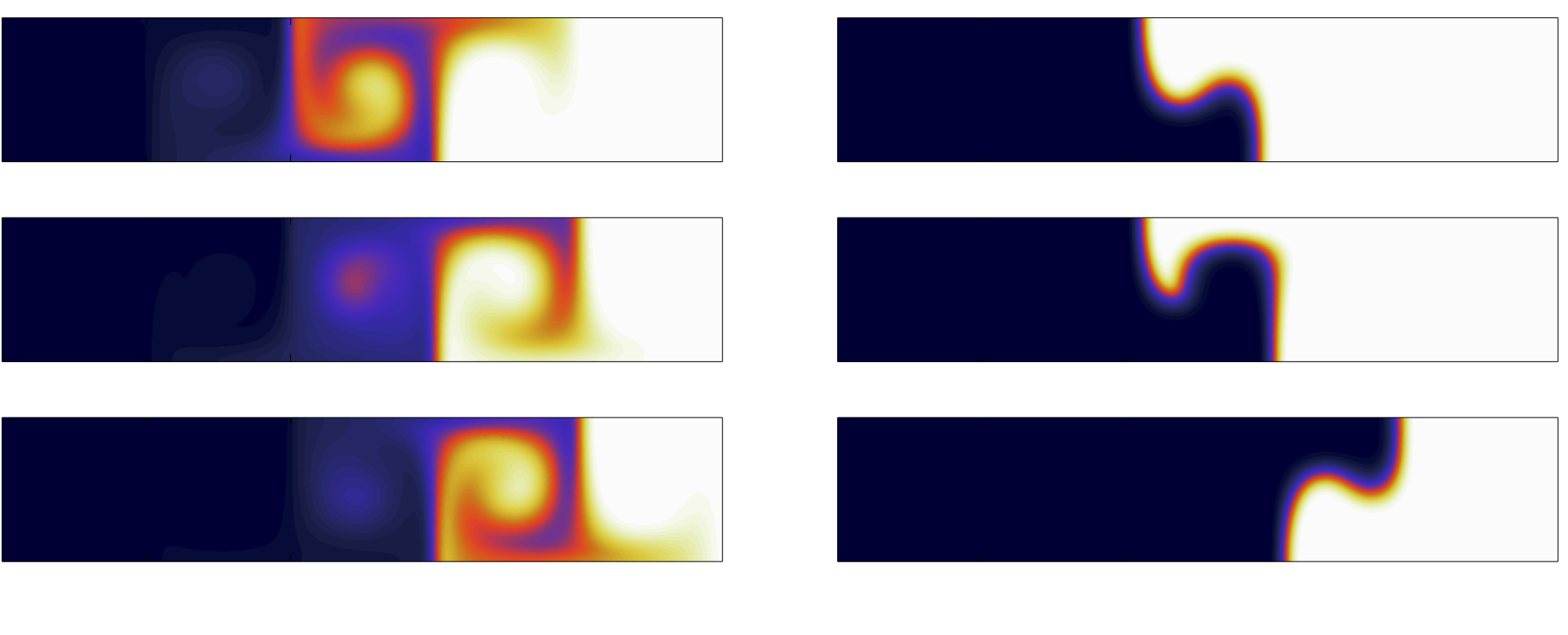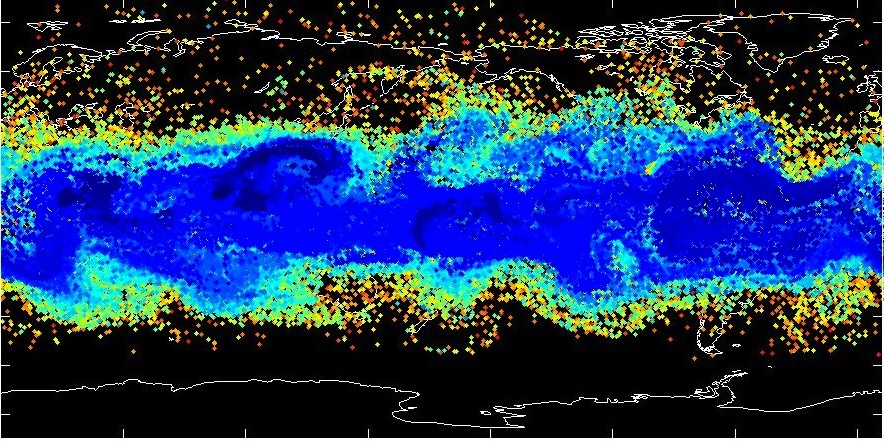
|
Spatial structure of chaotically mixed scalars. Motivated by the spatial heterogeneity observed in nutrient, phytoplankton and zooplankton distributions in the ocean at meso and sub-meso scales, we examined
a class of biological models that, via a large-scale source, couple nutrients and plankton to a chaotic-advection flow.
The particular emphasis has been on understanding the impact of the reactions and the intermittent nature of the flow on the corresponding filamental structures. The inclusion of a delay time in the reactions gives rise to a new scaling regime whose appearance depends on the magnitude of the delay time and the flow Lyapunov exponent
(Tzella and Haynes 2007
Tzella and Haynes 2009).
Another result emphasizes
the dependence of the field's scaling exponents on the flow stretching statistics (Tzella and Haynes 2010).
Mixing efficiency.
There has lately been a lot of interest in quantifying the mixing efficiency of a continuously replenished scalar field. A set of bounds have been derived for the variance of the scalar and its gradient.
Motivated by the apparent lack of control of the stirring process on these bounds, we focused on the characteristic lengthscale at which the variance is dissipated and derived a set of lower bounds for its value. For strongly stirring flows (high Péclet number),
these lower bounds imply a number of regimes, one of which corresponds to the Batchelor regime. The transition between these regimes is controlled by the ratio of the characteristic lengthscale of the source and velocity field (Alexakis and Tzella 2011).
|


